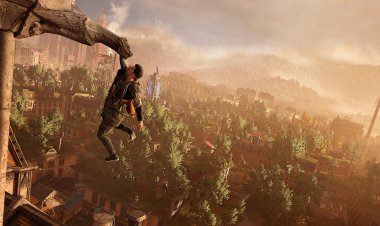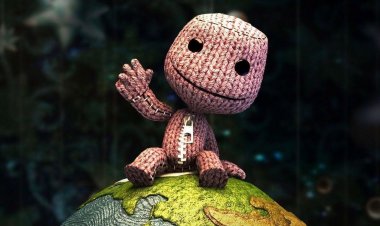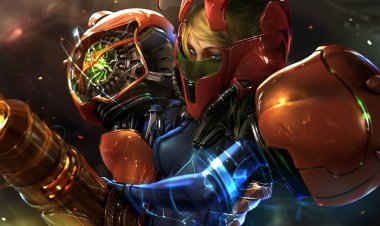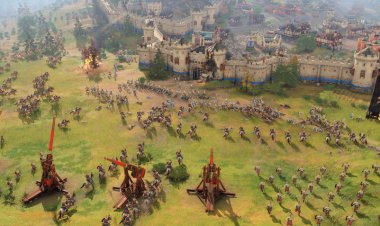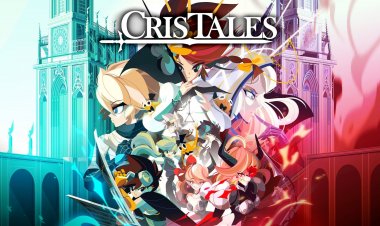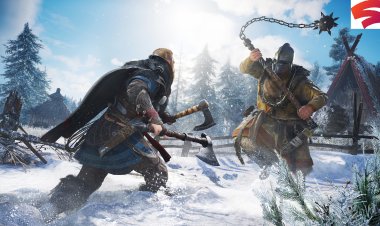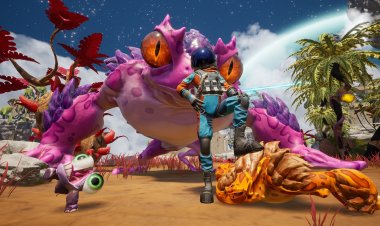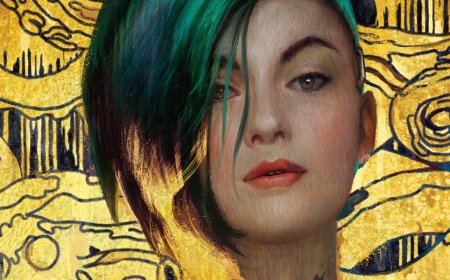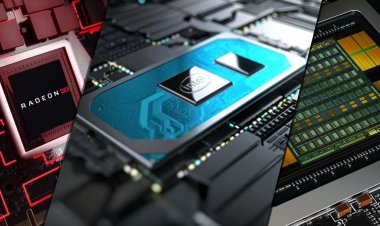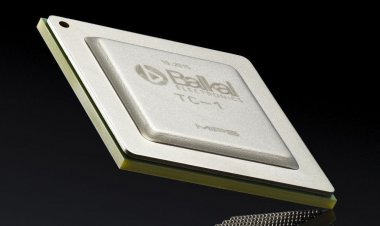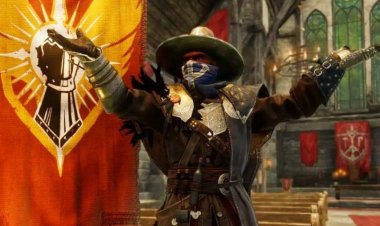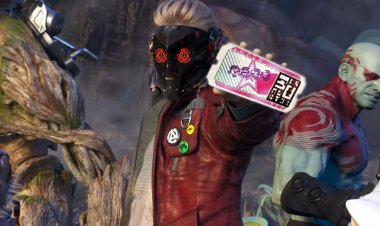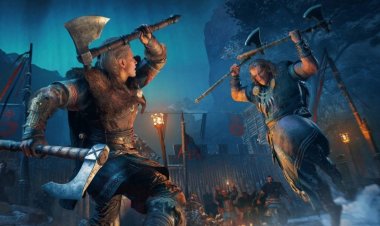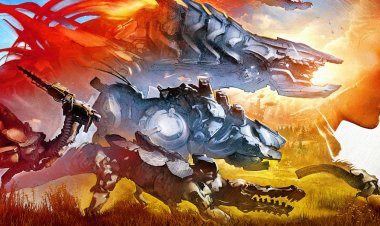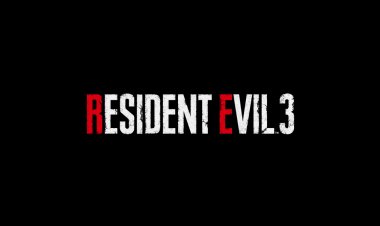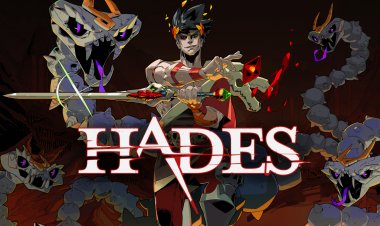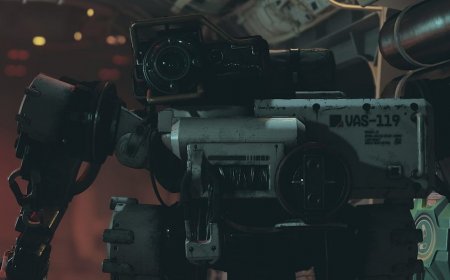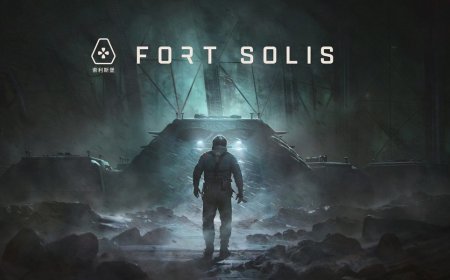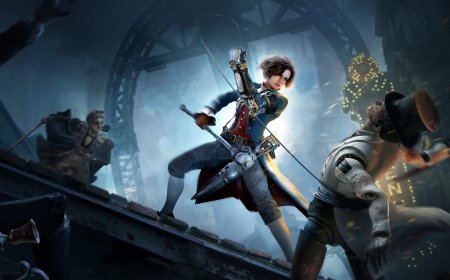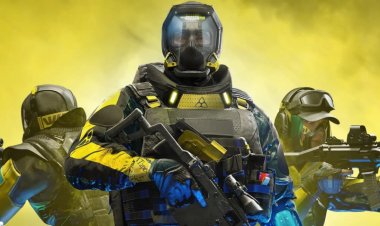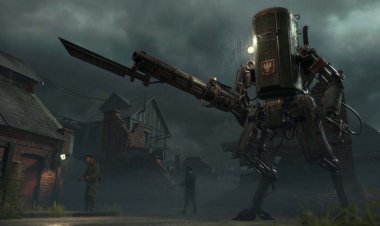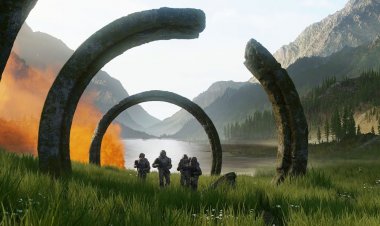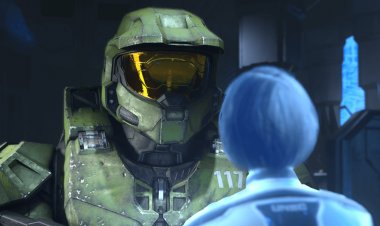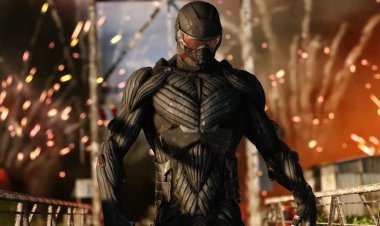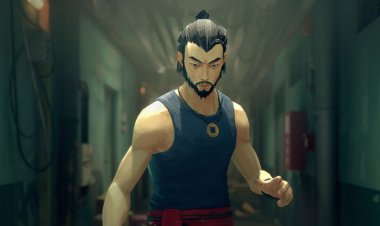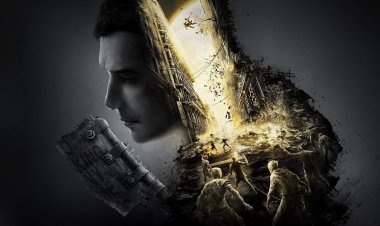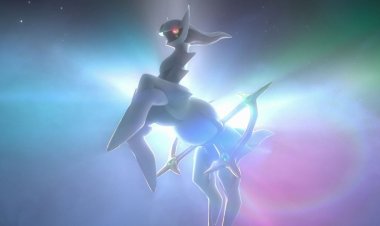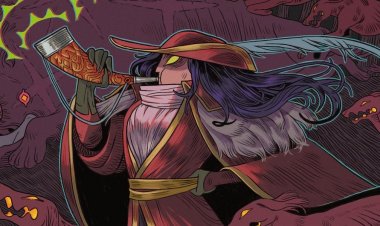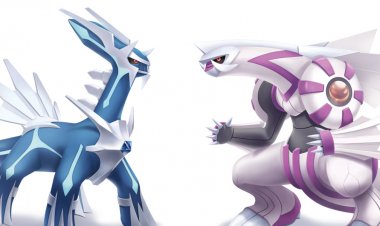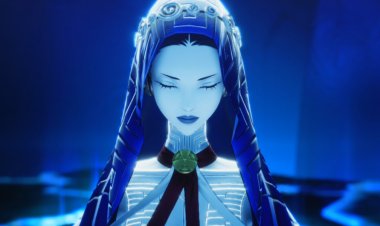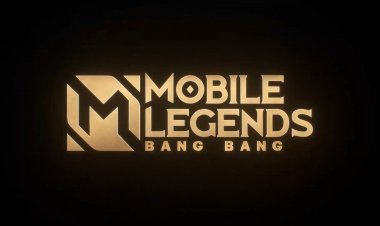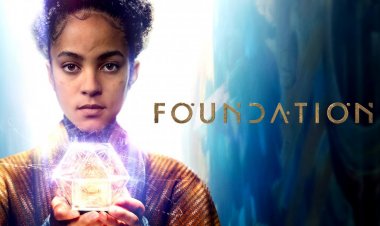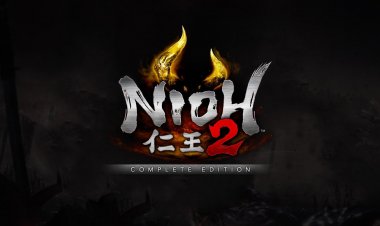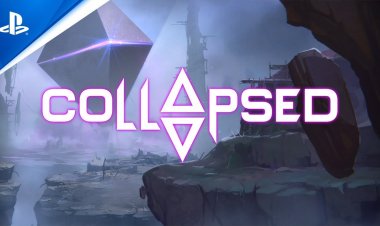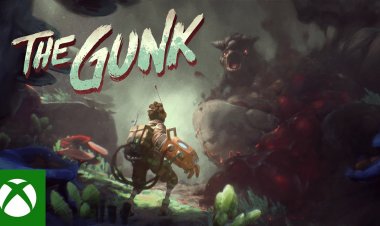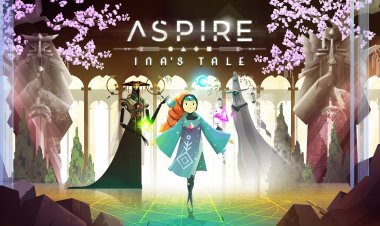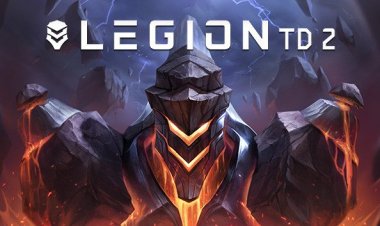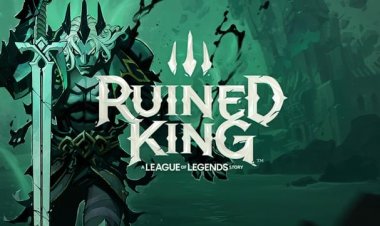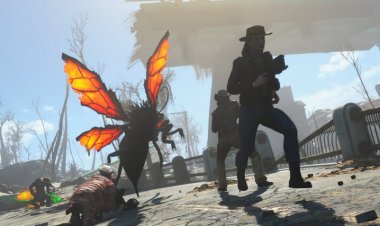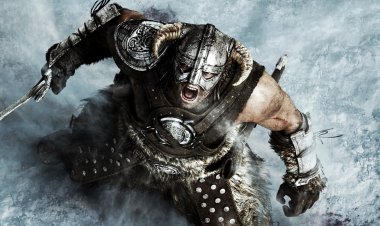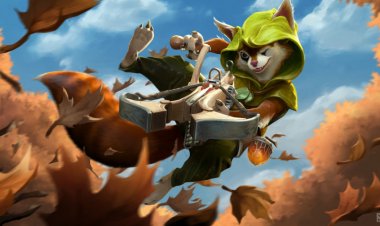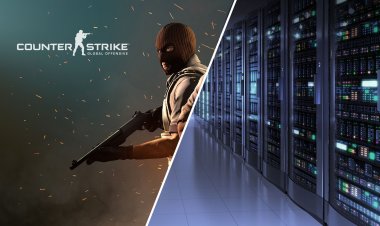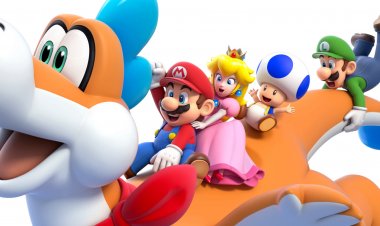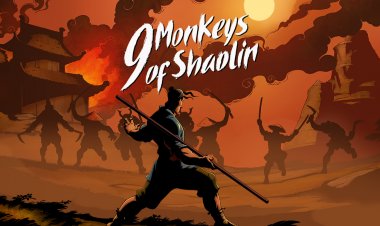Shin Megami Tensei V - Review
The release of Shin Megami Tensei V on the Nintendo Switch console is a big event. Despite its historical status and cultural footprint, the hardcore RPG franchise Atlus has remained in the shadows in recent years.

After the premiere of Shin Megami Tensei III: Nocturne, held back in 2003, the numbered issues of Shin Megami Tensei moved to the Nintendo DS and Nintendo 3DS portable consoles with all the accompanying restrictions and necessary adjustments.
And Shin Megami Tensei V itself has been perceived as a distant mirage for a long time. The project was officially announced in 2017, after which the developers stopped actively contacting, paying all attention directly to the production processes.
But the local holiday has finally arrived. After a long wait, the Shin Megami Tensei V went on sale. Moreover, all over the world at the same time — unpleasant time windows between Japan and the western regions were avoided this time by Atlus.

By choosing the Nintendo Switch as the main platform and the Unreal Engine 4 engine as the technical foundation, the developers sought to make a noticeable step forward in terms of the overall visual presentation. And at the launch of the game, already from the opening shots, I want to say that the artists coped with their task. Despite the low-key environment and a number of stylistic solutions, such as "faceless" extras, the novelty boasts pleasant character models, soft animations and successful coloristics — it's corny to look at the screen. However, the fifth Shin Megami Tensei fully reveals its outer shell a little further — as soon as it comes to the main gameplay areas and the combat system. More on this below.
In terms of the overall structure, Shin Megami Tensei V is a fairly simple thing. First, the game outlines the basic plot plot through a small prologue. The events unfold in modern Tokyo and are presented on behalf of a simple (or only seemingly so) androgynous schoolboy. Life goes on as usual, and no apocalyptic catastrophes are visible on the horizon. Nevertheless, rumors are actively circulating in the city about a number of strange incidents — people see mysterious creatures, become victims of attacks of unknown origin and feel unsafe.
One day, returning from school by the usual route, the protagonist, along with his companions, is forced to look for another way — another attack took place at the local station. As an alternative, the hero chooses a long underground tunnel, which becomes a fateful decision. In accordance with the well-known motifs of Japanese myths, the path through the tunnel is the road to another reality. It is with this misfortune that the hero faces. Feeling the roof collapse right over his head, the student flees and finds himself in a giant vast desert - the land known as Da'at.
Arrival in Da'at is immediately accompanied by another disaster. Ichiro Dazai, one of the protagonist's comrades, is abducted by a mysterious entity that looks like a Catholic angel. Having no other way out, the hero begins his journey through an unfamiliar reality until he finds himself trapped. Once surrounded by opponents, Aogami, a mysterious man who has lost his memories, literally stretches out his hand to the stranger. Having concluded a literal and symbolic union, the protagonist and Aogami merge into a single entity — the blue-haired Nahobino, who is able to command demons and repel the inhospitable inhabitants of Da'ata.
Starting from this moment, the narration of Shin Megami Tensei V takes a big pause. No less than five to six hours of real time will pass before the next major plot events, and you will have a reason and an opportunity to get deeply acquainted with the main mechanics of the project — level research, resource and party management, as well as the combat system.

Almost leaving behind the traditional labyrinths of dungeons, the new edition of Shin Megami Tensei offers to travel through the wide expanses of various ruins. Despite the strange geographical features of Da'ata, in fact, we are facing a destroyed and modified version of Tokyo. Therefore, it is necessary to move through concrete structures formed under its weight, railway tracks, small parks and rivers.
Nahobino jumps and runs quite briskly, which has a good effect on the dynamics and makes it easy to climb even into the most secluded corners of the map. As a reward for careful study of the hero's levels, spheres (chests) with objects, small Miman creatures, on which the pumping of passive skills, various NPCs and life sources are tied, are most often waiting for the hero. The latter are the most important element of local design, because through them you are preserved, restore health, set up your party and turn to the merchant.
It is impossible not to mention the additional tasks — most often these are mini-quests that require the collection of items or the destruction of a monster. But some missions allow for a more creative approach - they delight with a comical scene or an unexpected branching, where you can do as you see fit.
Of course, the locations are inhabited by numerous enemies - dangerous demons and creatures from the global mythology of Shin Megami Tensei. Monsters are displayed on locations as full-fledged models, and even actively move around the maps. There is no concept of “random” battles here — you can initiate a battle either on your own, prematurely hitting a demon, or vice versa, falling under their blow. Sometimes on your way there may be so-called "abscesses— - clumps of energy that act as a home for particularly strong demons. If you defeat them, the world map will become cleaner, and you will have additional options for further leveling.
The fights themselves are presented in a traditional step-by-step manner. The party consists directly of Nahobino, as well as three demons, the selection and sequence of which you determine yourself based on the available roster. As a combat action, there are traditional options, such as attack, defense and the use of objects.
As in previous releases of Shin Megami Tensei, the basis for the combat system is the smart and effective use of the weaknesses of opponents. Damage, without taking into account some status effects, is divided into six elemental positions and one physical one. Accordingly, the enemies have a different set of resists and predispositions. Guessing with the weakness of the demon, you not only take away a lot of health points from him, but also give your party an extra turn. Choosing the right tactics at the beginning of the fight or relying on blind luck, you can end the fight with a sequential combination of eight attacks. It is noteworthy that your enemies play by the same rules, and therefore, having inflicted critical damage on Nahobino or one of the demons, the opponent restores one move and can continue his series. In turn, hitting the "resist”, the situation will be reversed — you will lose one or more moves.

From other traditional mechanics, it is worth noting buffs and debuffs — they always play a very important role in Shin Megami Tensei. By lowering the enemy's susceptibility to damage and simultaneously increasing your attack rate, you can gain an advantage that separates you from victory. In the same direction, there are status effects, like sleep or charm — they help well with controlling particularly large groups of demons when you simply cannot afford to absorb damage from four opponents at once.
Another important element of local battles is the energy of “magatsuhi", which is actually a scale that allows you to use particularly strong skills. It is filled in automatically as part of battles or while traveling around the world. In addition, you can gradually discover additional conditions for its accumulation, including the death of party members in battle, activation of resists, and more. The skill tied to the ”magatsuhi" by default is guaranteed critical damage, regardless of the type of attacking skill. But later others are also unlocked — you find special talismans that allow you to use the skills of certain demons.
It is obvious that even in a few paragraphs to fit the complexity of the Shin Megami Tensei V combat system is a difficult task. Despite the relatively simple rules, certain scenarios in battles can play out very differently. Thanks to a well-adjusted balance that gets along with a painful "random", almost every battle develops in such a way that two, maximum three successful or unsuccessful moves separate you from victory or defeat.
Be prepared that even at a normal level of difficulty, the game does not give any indulgences — you will die, and you will die often, often losing a significant share of progress. It will be especially acute to notice this in battles with big bosses — they can take 10-15 minutes of real time, without giving the right to a single mistake.
Naturally, the overall complexity is leveled by pumping. In Shin Megami Tensei V, several intertwined systems fall under this definition at once.
Firstly, you raise the level of Nahobino himself — the hero becomes stronger, HP and MP indicators grow. Five characteristics also increase (strength, vitality, magic, dexterity, luck) - stats are distributed randomly, but you can put exactly one point into the scale you need, which opens up space for creating your build.
The second point is passive skills. Studying Da'at, you accumulate "honor points”, the main source of which are the Mimans mentioned above. Having reached any source of life, you are free to move to Sofia, the mistress of the world of shadows, and exchange the accumulated currency for one or another skill. Some of these abilities help in combat (you get extra slots for attacks), some contribute to the growth of the “magatsuhi" scale, and some banal increases the indicators of this or that elemental damage.
The last and most important piece of the puzzle is the demons themselves. For people far from the franchise, the principle of selecting allies in Shin Megami Tensei can be compared to collecting Pokemon. In total, the game has a little more than 200 unique creatures — you will fight with them as enemies, and they will also become your biggest allies.
Most often, "recruiting” is carried out through the process of direct conversation with a demon. Having entered the battle, you can invite the creature to communicate, which initiates the mechanics of the dialogue — you choose one of several options, answering (often absurd) questions. Some demons may ask for money or health points as a tribute, while others will have enough of one successful joke.
At the same time, the strongest and most powerful demons are obtained through the so-called "fusing” - the process of crossing one creature with another. If you cross a cute cat and some creature of Celtic mythology, a new ally with his own skills and characteristics will join your team. The process of crossing can also be controlled a little, for example, choosing which of the abilities the demon should inherit, and which he can safely forget.

In Shin Megami Tensei V, the modeling of the demon team has become even deeper thanks to the appearance of so-called “entities”. These are items that are assigned to certain creatures and retain their abilities and resists. Using the essence, you can give the monster a fresh set of attacks, and in the case of Nahobino, completely change the susceptibility to damage.
Collecting demons in Shin Megami Tensei V is also interesting because each of them has a unique model and a number of animations. Leaving behind the almost static illustrations of monsters from SMT IV and SMT IV: Apocalypse, Atlus designers tried hard to give each creature a memorable style and mood. Of course, not all attacks are accompanied by a unique visualization, but it's still great to watch the fights — the moves are fast and spectacular.
Expressive musical accompaniment also greatly helps perception. Here, in many melodies, light electronic motifs predominate, combined with aggressive percussion and string parts that fall on heavily distorted vocals. And during the quiet episodes, the composers suggest enjoying the hypnotizing ephemeral ambient, stuck between strange futurism and oriental motifs.
Curiously, the combination of new and classic trends is an approach that generally reflects very well the content of Shin Megami Tensei V. The novelty from Atlus is an extremely, extremely conservative game, but with a modern stylish presentation.
The plot component is minimal, and wavelike reminds of itself every few hours. The difficulty is high, unforgiving of mistakes and requiring maximum concentration. The management of demons is a bottomless swamp, into which it is literally necessary to plunge headlong. But all these aspects result in extremely addictive entertainment, from which it is difficult to break away.

Beyond a number of unpleasant technical flaws, such as unstable frame rate and loading of objects, as well as a somewhat uneven narrative, Shin Megami Tensei V is a great gift for fans and a good springboard to the series for beginners. The main thing is to discard all fear — only the strongest can command demons. The wait was worth it!




What's Your Reaction?













